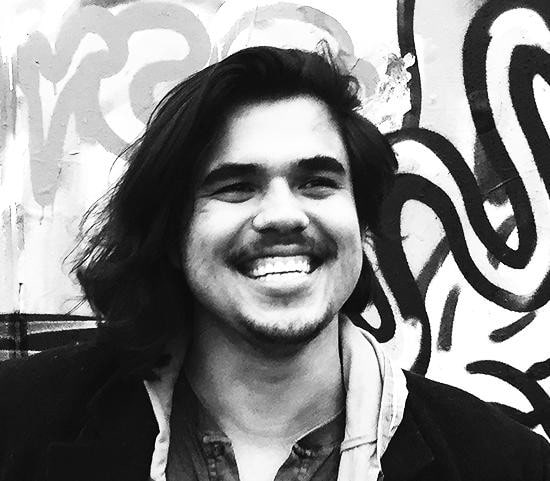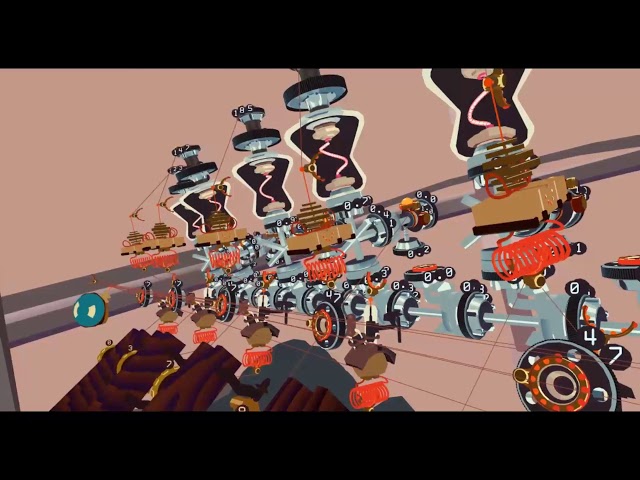MuX -playground for real-time sound exploration
What new challenges and opportunities arise while programming and playing sound inside 3D space?
Edo Fouilloux

It was so fascinating to have Edo Fouilloux in the MCT sonification seminar series. Edo is a visual innovator and a multidisciplinary craftsman of graphics, sound, computing, and interaction. He co-founded Decochon in 2015 to work with Mixed Reality (XR) technologies. MuX is a pioneering software in the field of interactive music in virtual reality systems. Edo demonstrated the concepts and philosophies inside Mux, where it is possible to build and play new instruments in the virtual space.
MuX

From his own words “Mux is for build sound. It is a playground for real-time sound exploration”. The user can explore the principles of sound by combining the various sound modules provided in the system. As an example, the VR module for the speaker actually visualizes the concept of a real speaker.
In the designing process, the very first idea was to define how the components can be separated or combined and to what extent it is possible. Started with a speaker and an oscillator with using arithmetic operations like multiplication, addition to generate different sounds.
There are discrete and continues data flows inside MuX. They created analogies to describe the data types. The bulbs represent the discrete data and cogs are to represent the continuous data. Additionally, there is another type of components called “interfaces” which are buttons, sliders, etc. The interfaces will allow the user to control the information is preferred.
The user can walk around the virtual Space and be surrounded by all the electronic sound components. The components can be created from the “sound palette”. There are Oscillators (with multiple wave patterns), Noise generators, Buttons, Decay envelops, and Filters. Inside “event components”, there is a metronome, random generator, step sequencer and much more. By using these event components it is possible to create loops. Edo showed another way of creating loops inside MuX. That is by using a “marble generator”. These items will produce marbles and “wooden pallets” are used to catch them and the slope of the palettes can be used to define the tempo to modulate any oscillators. “Frequency converter” component helps to modulate the frequency according to the input from the marble generator.
The “laser board” can be used to create melodies and the marble generator will create the loop of the melody. The components have a very mechanical nature in design. Also, MuX is an expressive instrument in live performances. This opens up new concepts of using gestures to create music inside a virtual reality platform.
Q & A
After a very fun and informative presentation, students had a lot of questions. There were questions regarding the design of the MuX, live performances and future expectations. There are about 100 modules in the system which is fully flexible for users to play with. It is a great way to explore the fundamentals and theories of generating sound and people have given positive reviews. The MuX has a huge potential of using it as an educational tool for audio concepts and sound design. The live performance is an interesting challenge for MuX. The person who uses the VR system becomes the center of the performance and other musicians will follow. Development of augmented reality systems in the future will be beneficial to optimize the system for live sessions. As for future development, there are several discussions on implementing multi-player options. Right now the system has the ability to use OSC signals or have multiple screens. The community is about 500 people and it’s growing. As for further future plans, there is an idea to have an assets store to share and download components and also to make the system make playable outside the Virtual reality platform.
Personal reflections
I think MuX is a revolutionary instrument for the future music industry that has the potential in creating a new musical culture around virtual reality. MuX can be also seen as a great learning tool to understand and explore fundamentals in sound design and has great flexibility towards it. Edo presented very helpful ideas and concepts to consider playing inside the MuX.
You can try it out by visiting the website https://www.playmux.com/
